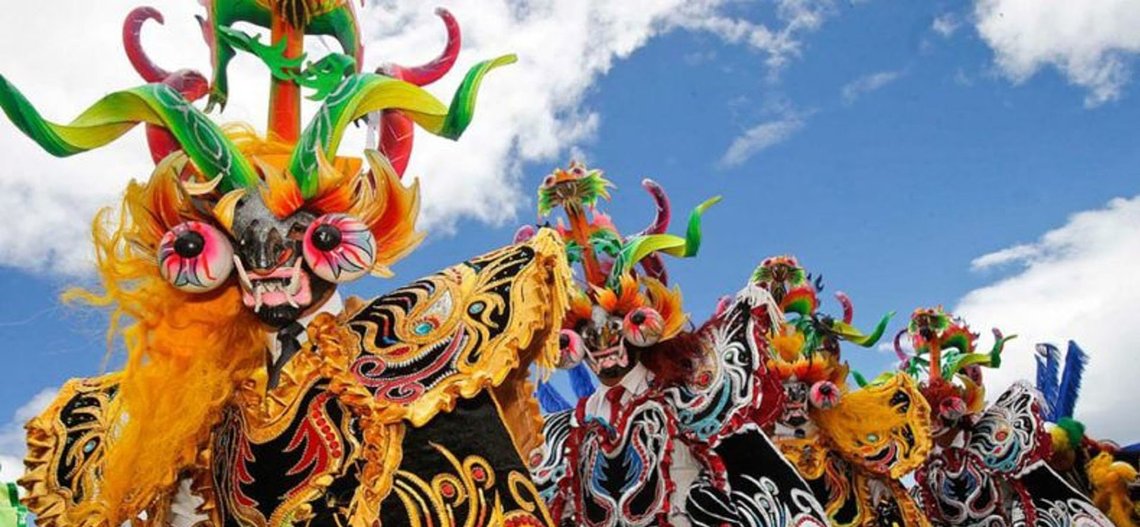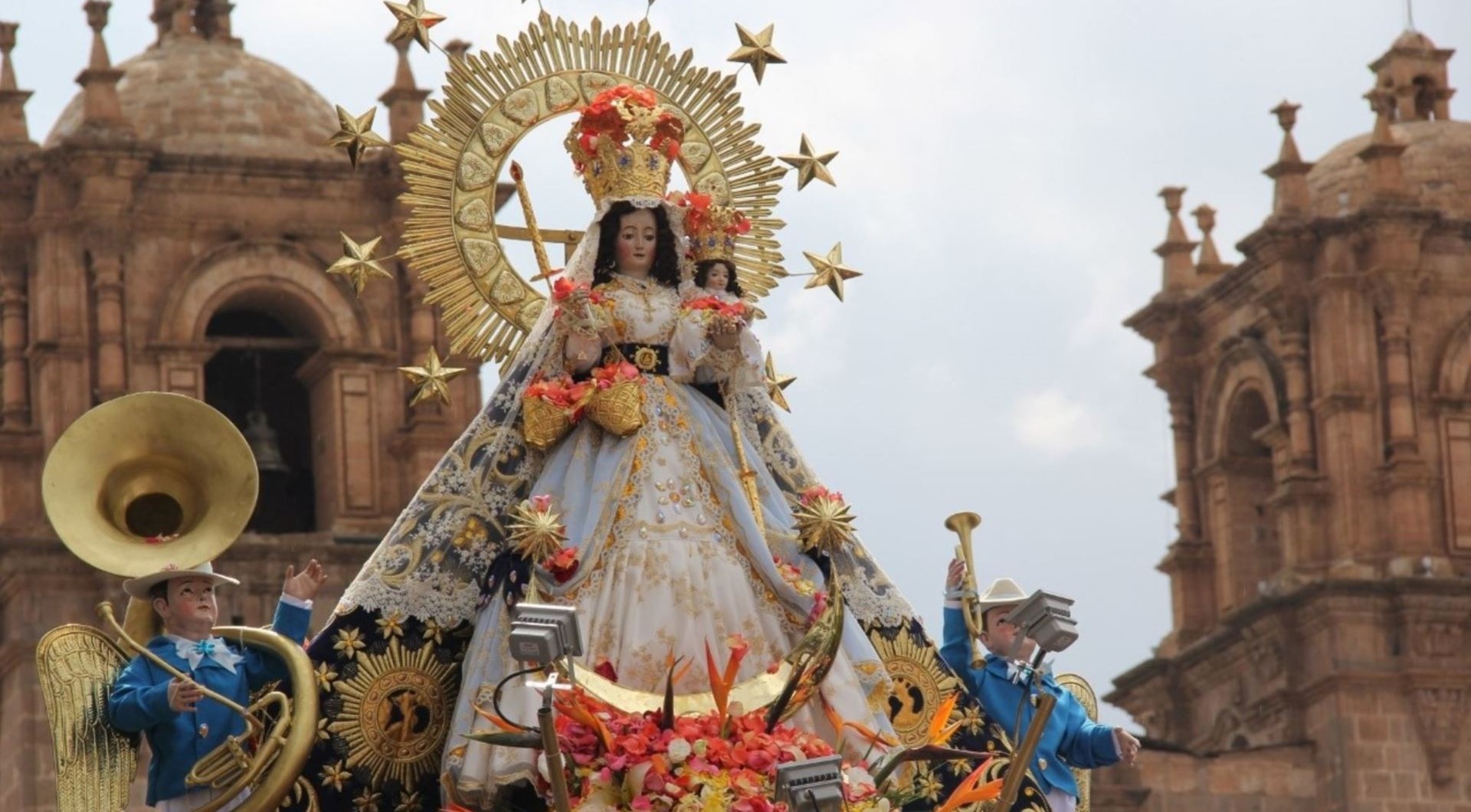What is the Virgen de la Candelaria?
The Virgen de la Candelaria (“Our Lady of Candelaria”) is the patron saint of the Canary Islands

Posted on Sun 21 Jul 2019
(a.k.a Virgen de Chapi or Virgen de Copacabana) - first two weeks of February
The Virgen de la Candelaria (“Our Lady of Candelaria”) is the patron saint of the Canary Islands but is also very important to Peruvians and people across the Americas. According to a legend from the late 1300’s, two goatherds discovered a statue of a woman holding a child in one hand and a candle in the other (hence the name “Candelaria”) on a beach near the town of Güímar in the Canary Islands. These shepherds foolishly tried to attack the statue, but one was miraculously paralyzed and the other was forced to turn his weapon on himself. Later, a local convert to Christianity identified the statue as being of the Virgin Mary, and the subsequent Spanish conquerors of the island constructed the Basilica of Our Lady of Candelaria to house it. The statue was later declared the patron saint of the island and, 300 years later, washed out to sea in a tsunami, never to be seen again. The current statue is a reproduction.
Emigrants from the Canary Islands to Latin America brought with them the practice of worshipping the Virgen de la Candelaria. This practice caught on, and she is currently the patron saint of the cities of Mayagüez and Manatí in Puerto Rico, Oruro and La Paz in Bolivia, and Medellín in Colombia. She is no less important in Peru, especially the southern cities, where she has come to represent Pachamama, the Earth Mother, as well as the Virgin Mary and is venerated for the bounty she provides us. Various Peruvian cities venerate her on February 2 every year. The city of Puno on Lake Titicaca has the largest and most colorful celebrations in Peru, constituting one of the three biggest religious festivals in all of South America alongside Carnaval in Rio de Janeiro and Oruro, Bolivia. The festivities last for 18 days and attract crowds of thousands; extravagantly dressed dancers and musicians parade through the streets in a proud display of local culture. Each costume represents a different mythical or historical figure, local community or Christian icon. In Puno, the festival is a syncretic mixture of Christian and indigenous beliefs from the Quechua, Aymara and mestizo communities.
La Virgen de la Candelaria - Celebration in Peru.

In Puno, the celebrations start before dawn on February 2, with the leaders of Puno ascending a hill to pay their respects to the Virgin. They then descend to the Church of San Juan Bautista, which houses the image of the Virgin, for mass. Afterwards the image is paraded around for the first time, and in the afternoon the country folk come into town on horseback along with the yachiris (shamans, or witch doctors) to pay their respects to the image.
The first Sunday in February is home to a huge dance competition in the local stadium. As many as 70 groups with, on average, 100 members come from nearby communities to perform choreographed dances in traditional costumes. And they don’t stop: after the competition, the groups spill out into the streets of Puno to continue dancing and celebrating for the next seven days. The real party hasn’t even started by this point. On the 8th day, thousands more people flood the streets to stage huge parades, all dressed in traditional costumes including masks, dresses with mirrors and jewels, and depictions of saqras (demons). Another competition is staged to see which Puno neighborhood can hold the parade with the best costumes and performance. (You can see videos of many of these performances on YouTube.) The celebrations formally end on the 18th, and participants take a much-needed rest to prepare for next year’s celebrations.
Virgen de Copacabana (Virgen of Copacabana)
This is a related feast for the patron saint of Bolivia. The Virgin is worshipped with a feast on February 2, the same day as the Purification of Mary, and also on August 5. This feast is nowhere near as extravagant or length as the Puno celebrations.
Do you want to know more about the celebrations and traditions of Peru? Leave us a message here and we are happy to give you more details.